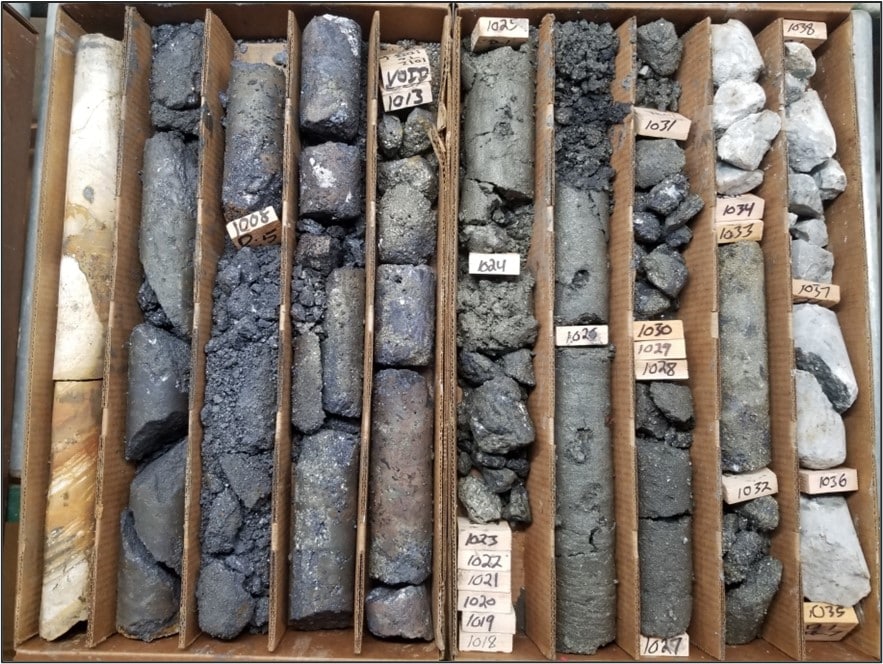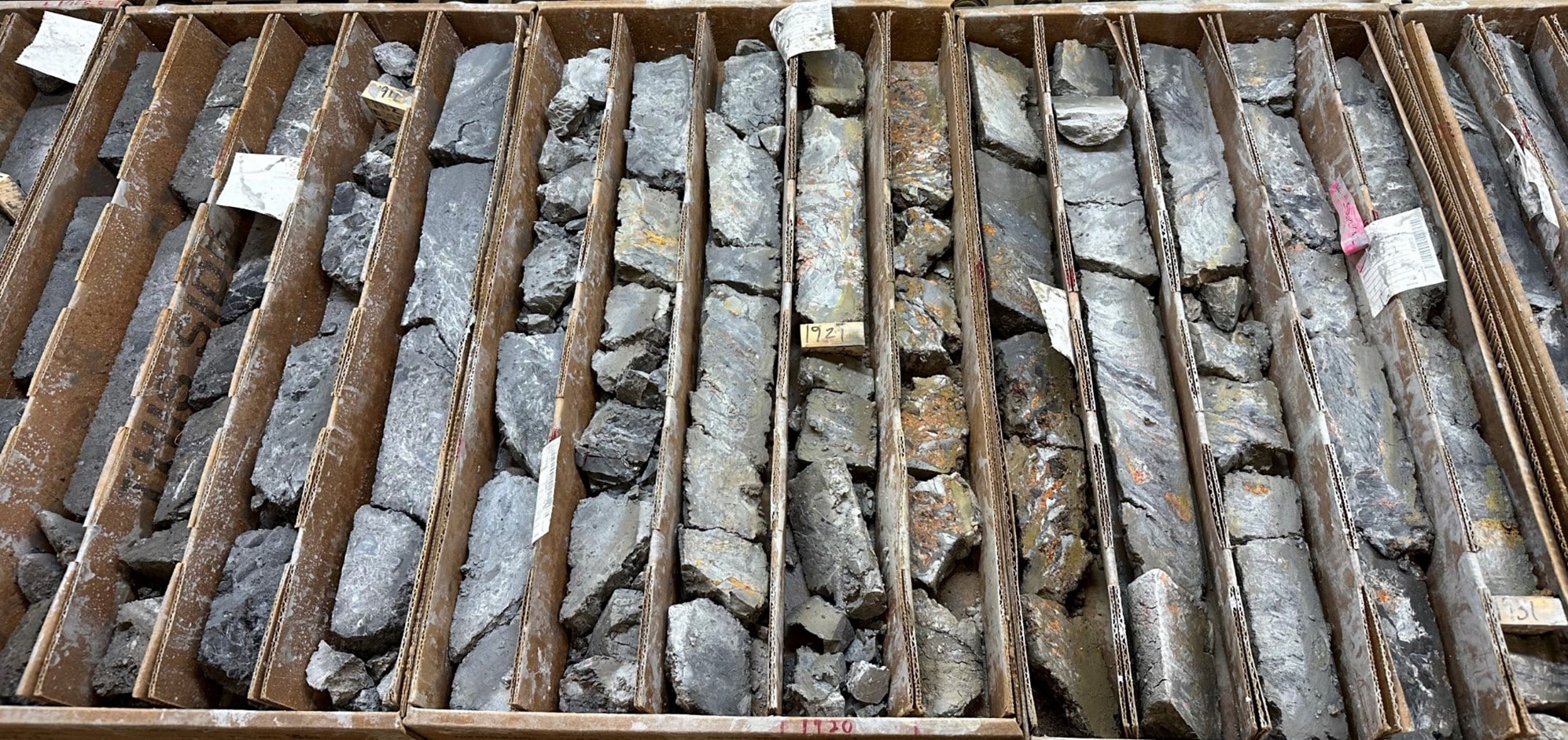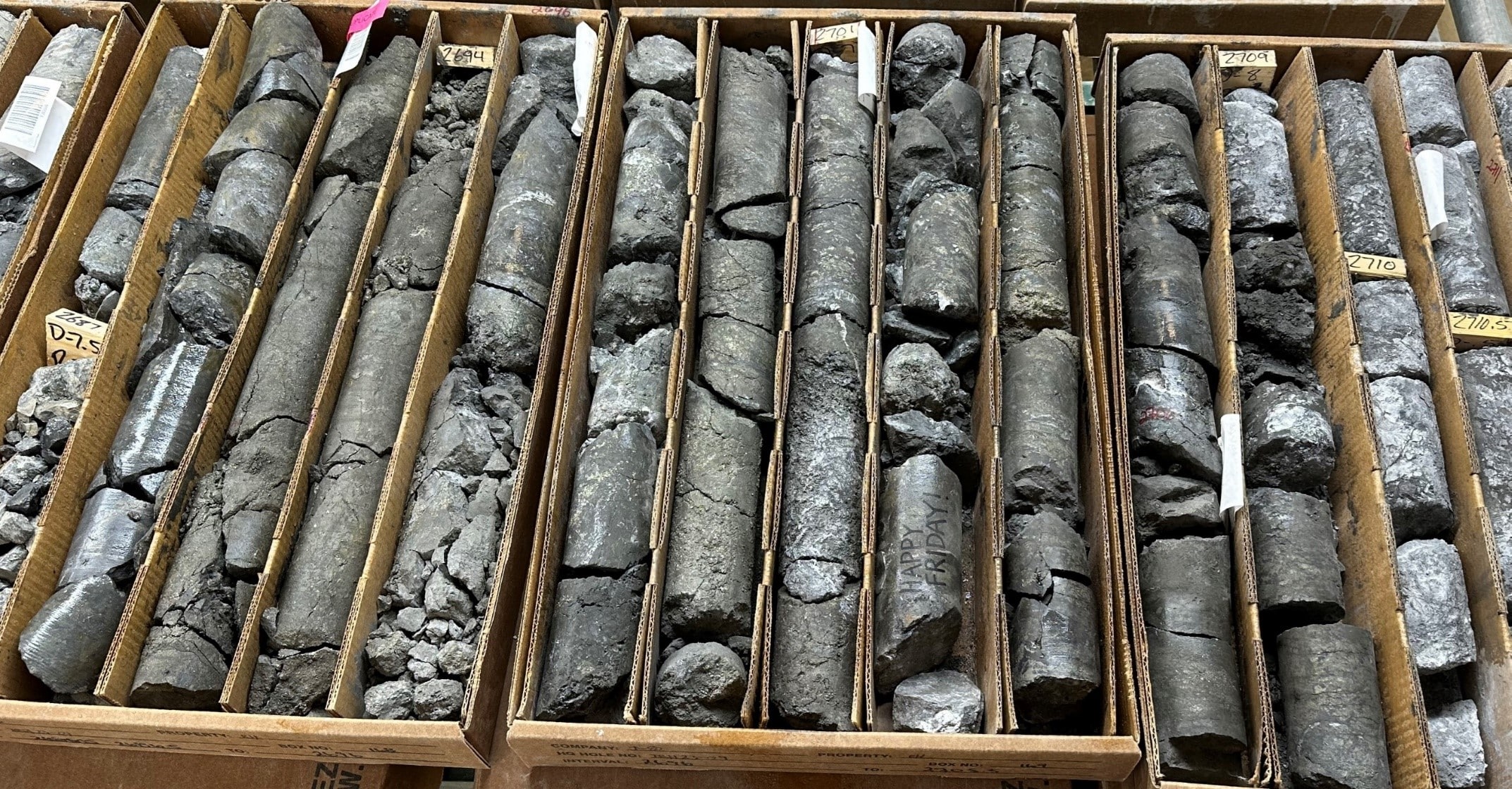i-80 Gold Provides Comprehensive 2023 Exploration & Development Update
Provides Lone Tree Cost Estimate & Announces Multiple New Discoveries at Ruby Hill
Reno, Nevada, April 03, 2023 – i-80 GOLD CORP. (TSX:IAU) (NYSE:IAUX) (“i-80”, or the “Company”) is pleased to provide an update on the Company’s exploration and development programs at its Ruby Hill, Granite Creek, Lone Tree, McCoy-Cove and Buffalo Mountain Properties as well as the results of the initial cost estimate for the refurbishment of the Lone Tree. Continued success in the early part of the 2023 exploration campaign at the Company’s 100%-owned Ruby Hill Property (“Ruby Hill” or “the Property”) located in Eureka County, Nevada highlights the substantial upside at the Company’s flagship project with multiple new zones of both Carlin-type gold and Carbonate Replacement Deposit (CRD) type mineralization having been discovered in the early part of the program.
Key initiatives for each project include:
- Ruby Hill Property – Major drill program underway, Preliminary Economic Assessment (PEA) being completed for the underground gold mineralization, permitting ongoing for underground development, detailed metallurgical work and processing plan under development
- Granite Creek Property – Underground development progress, mining rate increasing, economic studies and revised resource estimate being completed
- Lone Tree Property – Cost estimate for the restart of the autoclave facility completed and work on the Class III Engineering (detailed engineering) Study underway, Ongoing residual leach program
- McCoy-Cove Property – Underground development progress to more than 70% completion, ~40,000 metre underground drill program underway
- Buffalo Mountain Property – Drilling program completed in late 2022, assessing potential for an open pit mining operation
“2023 is expected to be a catalyst-rich year with exploration, development, and mining projects complemented by economic studies and resource updates.”, stated Ewan Downie, CEO of i-80. “This work will continue to provide information so that we can make an informed decision related to the sequencing of the start-up of our two processing facilities to achieve our industry-best production growth plan.”
Ruby Hill Property
Four main initiatives are planned at Ruby Hill for 2023 including a large-scale exploration drilling program, initial economic work for the planned Ruby Deeps underground gold mine, permitting to allow for the commencement of underground development and advanced metallurgical work for the recoveries of gold and polymetallic base metal mineralization for mining and processing planning.
Five drills are currently active focused on expanding mineralization in the primary known zones and also testing several new exploration targets on the property. New discoveries have been made in the early part of the 2023 drilling program with Carlin-type (gold) and CRD (polymetallic) mineralization intersected in several new target areas located in close proximity to the underground infrastructure being planned for the Property.
Drilling in the Upper Hilltop Zone continues to expand mineralization and semi-massive and massive sulphide CRD mineralization has been discovered in the East Hilltop area (see Figure 1 and Photo 1). Additionally, multiple horizons of mineralization have been intersected in hole iRH23-09 (assays pending) extending mineralization along the Hilltop structure over a strike length of approximately 750 metres.
Hole iRH23-10 intersected a new zone of CRD type mineralization (assays pending) in the eastern extension of the Hilltop fault structure (see Figures 1 & 2 and Photo 1). The East Hilltop Zone is located approximately 200 m to the east, and along strike from, the Upper Hilltop Zone where 2022 drilling returned high-grade intercepts including 515.3 g/t Ag, 28.9 % Pb, 10.5 % Zn & 0.9 g/t Au over 28.3 m, 1.9 g/t Au, 631.3 g/t Ag, 7.4 % Zn & 33.0 % Pb over 18.3 m and 60.2 g/t Au, 908.7 g/t Ag, 1.1 % Zn & 15.7 % Pb over 10.0 m (see press releases dated August 30th, 2022 and November 14, 2022).
Figure 1 – Hilltop Fault Structure Drilling

Photo 1 – East Hilltop CRD Discovery – Massive Sulphide Mineralization in Hole iRH23-10

A zone of sulphide breccia CRD mineralization was intersected in hole iRH23-09 including appreciable sphalerite (zinc) (see Photo 2). This zone was immediately followed by a large zone of Carlin-type mineralization containing significant realgar and orpiment (see Photo 3). These mineralized zones were intersected below the “Bullwhacker Sill” and represent an area where the Lower Hilltop and Ruby Deeps Zones converge. Polymetallic mineralization in the Lower Hilltop Zone occurs proximal to the Bullwhacker Sill approximately 250 metres to the east of this intercept and Carlin-type gold mineralization in the Ruby Deeps Zone occurs proximal to the Bullwhacker Sill approximately 200 metres to the north suggesting significant upside in both zones. A section (Figure 2) and surface plan (Figure 1) of the upper mineralized intercepts in hole iRH23-09, displaying their location proximal to the Ruby Deeps and Hilltop Zones.
Photo 2 – Sulphide Breccia in Hole iRH23-09

Photo 3 – Carlin-type mineralization in Hole iRH23-09

Figure 2 – Section Along Hilltop Structure

Deeper in iRH23-09, a zone of massive sulphide mineralization (see Figure 2 & Photo 4) was intersected representing a second polymetallic intercept in an area of no previous drilling in the footwall of the Holly fault structure. This mineralization occurred at the contact of the Secret Canyon shale with the underlying Geddes limestone.
“The success we have realized early in our 2023 drill program continues to confirm the world-class potential of the Ruby Hill project.”, stated Tyler Hill, Chief Geologist of i-80. “We are advancing permitting to provide the ability to expand exploration to test the Hilltop Corridor further south toward the FAD deposit and for the ability to test two of our priority exploration targets defined by geophysical surveys.”
Photo 4 – Massive Sulphide Discovery in Hole iRH23-09

Final deposit modeling and mine planning are being completed in advance of the release of a PEA for the Ruby Deeps and 426 gold deposits. This initial economic study is being planned for release in Q2.
Permit submissions are in progress related to the commencement of underground development being constructed from the Archimedes pit. This underground development will provide improved access for definition drilling of the multiple gold, polymetallic and base metal deposits, test mining and advanced economic studies prior to mining.
A detailed metallurgical testing program is being completed for both gold and polymetallic base metal mineralization at Ruby Hill. This work will be utilized in economic studies for the processing both types of mineralization from the Ruby Hill Mine including advancing plans for the potential construction of a floatation plant on the property.
Granite Creek Property
Three sublevels have now been completed and are being mined on the Ogee Zone at Granite Creek. A fourth sublevel is currently being developed to increase mining rates as the Company continues to prioritize the development of five levels on the Ogee Zone followed by the construction of infrastructure to the north to provide access for definition drilling and development of the South Pacific Zone. These initiatives are expected to accelerate the delivery of high-grade refractory mineralization for processing at Nevada Gold Mines’ “Sage Plant” at its Turquoise Ridge / Twin Creeks Mine located to the north (See Figure 3).
Installation of a sixth dewatering well is nearing completion that is expected to drop the water level and contribute to accelerated development and mining rates. A Feasibility Study for the Ogee underground mine is nearing completion along with an initial resource and PEA for the South Pacific Zone that is expected to be the primary zone at the Granite Creek Mine starting in 2024. These studies are expected to be released in Q2.
Figure 3 – Granite Creek Property Location

Lone Tree Property
Oxide material from the Granite Creek mine is being placed on a dedicated section of the Lone Tree leach pad for high intensity leaching. Realized recoveries match the estimated leaching curves. Alternate processing options are being investigated as significant high-grade oxide mineralization continues to be mined from the Ogee zone at Granite Creek.
i-80 has completed an initial cost estimate at a pre-feasibility level and schedule study for recommissioning of the Lone Tree Autoclave facility. The purpose to this study was to review the requirements to recommission the Autoclave and CIL plant to its nameplate operating capacity, modify the plant for processing in the alkaline environment and to update it in order to meet modern permitting requirements. The study also included an updated cost estimate (with an expected accuracy of -20% to +30%, and an effective date of September 2, 2022) and several key studies focused on reducing capital, improving safety and/or reducing operating costs. Detailed cost estimates are provided in Table 1 below.

The study was completed by Hatch and a 3rd Party peer review was completed to better understand means and methods and conclusions, evaluate risks and to confirm the Study is consistent with industry standards. The project teams are now advancing a Class III Engineering Study to further refine the refurbishment plan to provide sufficient enough detail for potential future project financing. The final Hatch report is expected to be completed in 2023.
The Company is currently reviewing its project development timeline by assessing the value of its gold and polymetallic resources, permitting timelines and financing requirements for the sequencing of the of the Lone Tree autoclave and a potential floatation plant at Ruby Hill. The Company remains committed to growing its business in a capital conscience manner with a focus on maximizing shareholder value. A decision will be made on the optimal path forward once it has more thoroughly defined its mineral resources to advance economic studies and technical reports.
McCoy-Cove Property
Progress on the construction of the initial decline and exploration drift for the future development of the Cove underground mine is now more than 70% complete and underground drilling is underway. The underground definition drill campaign of approximately 40,000 metres will be completed over the next 18 months to upgrade resources in advance of a Feasibility Study.
Installation of piezometers for detailed water flow studies is also being completed for full mine permitting and long-term dewatering plans. Cove represents one of North America’s highest-grade development-stage gold projects with existing resources displayed in Table 2.

Buffalo Mountain Property
An initial drill campaign was completed at the Buffalo Mountain Property in H2-2022. The results of this program, that include intercepts of 1.0 g/t Au over 134.1 m and 1.2 g/t Au over 40.8 m, will be incorporated into a revised resource estimate and economic plan regarding a potential open pit operation with mineralization processed at Lone Tree. Of particular note is step-out iBM22-03 that intersected 1.0 g/t Au over 134.1 m in the Second Chanse Zone that opens up the potential to expand mineralization to the southeast where it remains open.
The Buffalo Mountain Property is located immediately west of Lone Tree, and i-80’s substantial infrastructure, and northwest of SSR Mining’s Marigold Mine (See Figure 4).
Figure 4 – Surface Plan of Buffalo Mountain / Lone Tree

Please click here for further information on abbreviations and conversions referenced in this press release.
QAQC Procedures
All samples were submitted to ALS Minerals (ALS) of Sparks, NV, which is an ISO 9001 and 17025 certified and accredited laboratory, independent of the Company. Samples submitted through ALS are run through standard prep methods and analysed using Au-AA23 (Au; 30g fire assay; ALS) and ME-ICP61a (33 element suite; 0.4g Four Acid/ICP-AES; ALS). Overlimit samples of Ag, Pb, and Zn are analyzed by ore-grade methods comprising HF-HNO3-HClO4 Digest, HCl leach and ICP-AES. Additional samples overlimit ore‑grade methods are analyzed by acid dissolution and titration. ALS also undertakes their own internal coarse and pulp duplicate analysis to ensure proper sample preparation and equipment calibration. i-80 Gold Corp’s QA/QC program includes regular insertion of CRM standards (gold and polymetallic), duplicates, and blanks into the sample stream with a stringent review of all results.
Qualified Person
Tyler Hill, CPG-12146, Chief Geologist at i-80 is the Qualified Person for the information contained in this press release and is a Qualified Person within the meaning of National Instrument 43-101.
About i-80 Gold Corp.
i-80 Gold Corp. is a well-financed, Nevada-focused, mining company with a goal of achieving mid-tier gold producer status through the development of multiple deposits within the Company’s advanced-stage property portfolio with processing at i-80’s centralized milling facility that includes an autoclave.
For further information, please contact:
Ewan Downie – CEO
Matt Gili – President & COO
Matthew Gollat – EVP Business & Corporate Development
1.866.525.6450
Info@i80gold.com
www.i80gold.com
Certain statements in this release constitute “forward-looking statements” or “forward-looking information” within the meaning of applicable securities laws, including but not limited to, the proposed exploration and development programs at its Ruby Hill, Granite Creek, Lone Tree, McCoy-Cove and Buffalo Mountain Properties, the cost estimate for the refurbishment and recommissioning of the Lone Tree autoclave facility expansion or mineral resources at each of the Company’s mineral projects, the timing of the completion of the economic studies in respect of the Company’s mineral projects, and the potential of the Company’s mineral projects. Such statements and information involve known and unknown risks, uncertainties and other factors that may cause the actual results, performance or achievements of the Company, its projects, or industry results, to be materially different from any future results, performance or achievements expressed or implied by such forward-looking statements or information. Such statements can be identified by the use of words such as “may”, “would”, “could”, “will”, “intend”, “expect”, “believe”, “plan”, “anticipate”, “estimate”, “scheduled”, “forecast”, “predict” and other similar terminology, or state that certain actions, events or results “may”, “could”, “would”, “might” or “will” be taken, occur or be achieved. These statements reflect the Company’s current expectations regarding future events, performance and results and speak only as of the date of this release.
Forward-looking statements and information involve significant risks and uncertainties, should not be read as guarantees of future performance or results and will not necessarily be accurate indicators of whether or not such results will be achieved. A number of factors could cause actual results to differ materially from the results discussed in the forward-looking statements or information, including, but not limited to: material adverse changes, unexpected changes in laws, rules or regulations, or their enforcement by applicable authorities; the failure of parties to contracts with the company to perform as agreed; social or labour unrest; changes in commodity prices; and the failure of exploration programs or studies to deliver anticipated results or results that would justify and support continued exploration, studies, development or operations.

